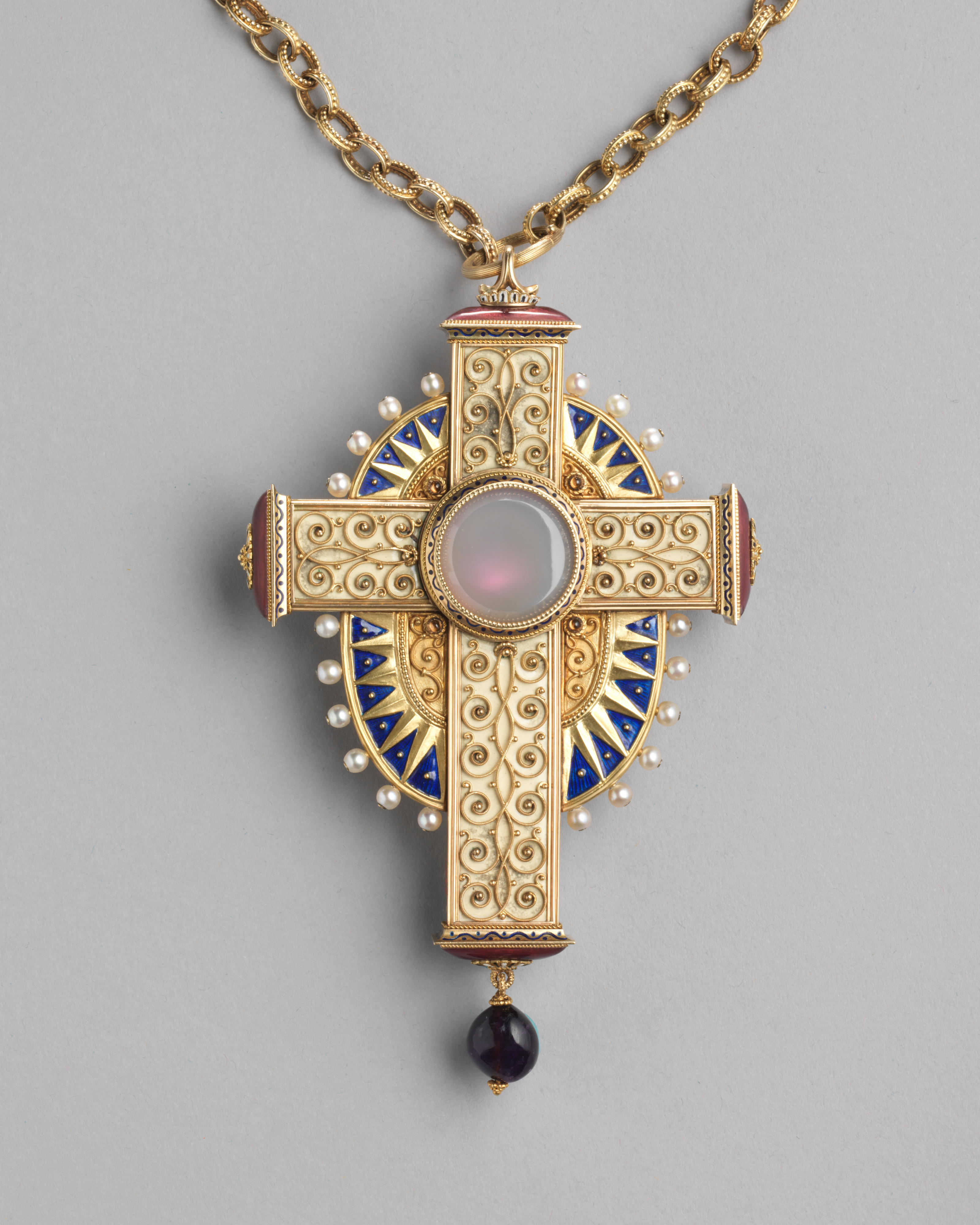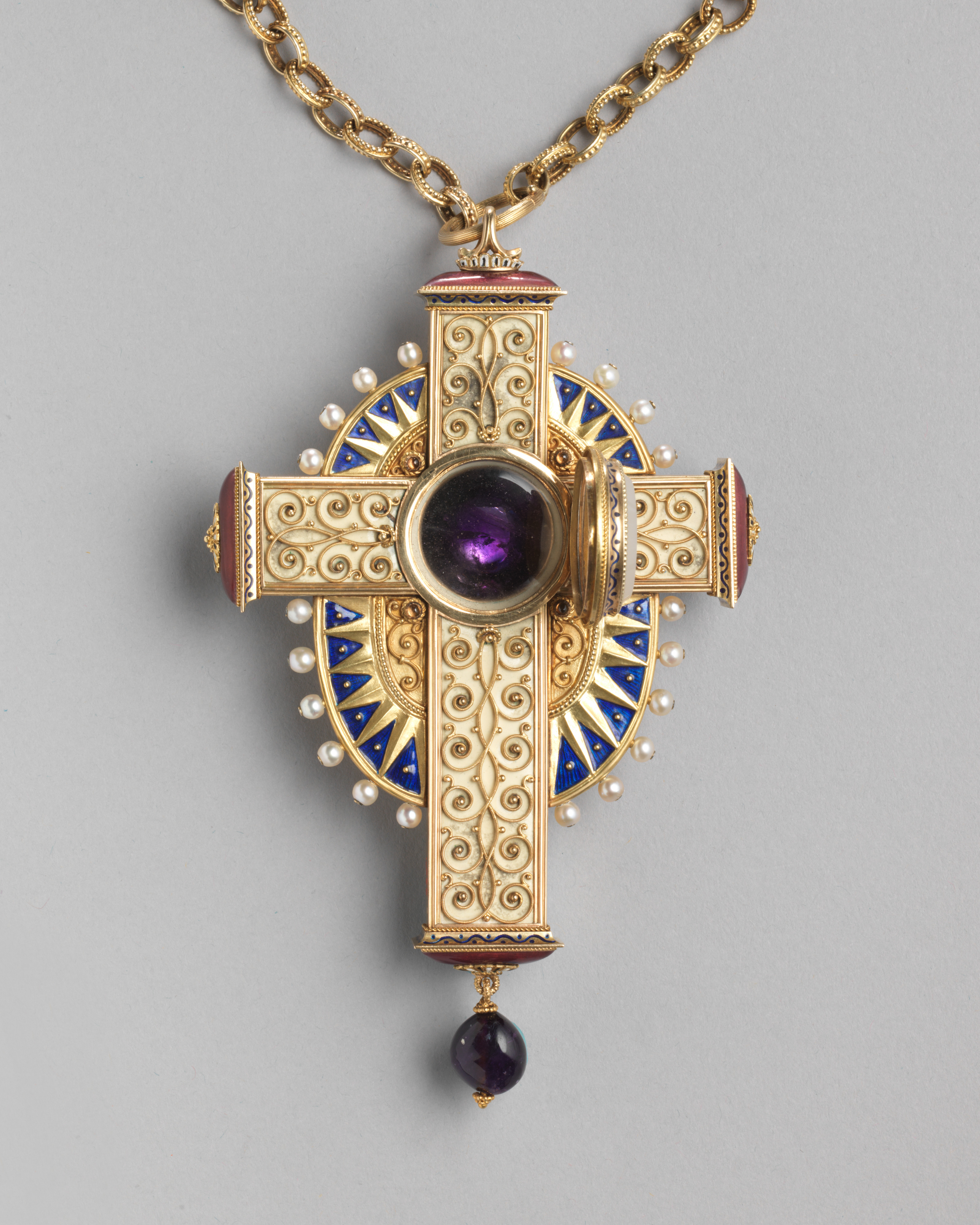Pectoral cross
Hemmerle German
Not on view
The Pectoral Cross or crux pectoralis, from the Latin "pectus," meaning breast, is worn on the chest near the heart. Often containing a relic of the True Cross preserved in a small compartment, they are only worn by high officials of the Catholic Church such as cardinals, bishops, or abbots. Together with a bishop's ring, the Pectoral Cross has formed part of the episcopal regalia since the late Middle Ages. Hemmerle made this pectoral cross of gemstones and enamel especially for their display at the Exposition Universelle, the World Exhibition in Paris, and unveiled it there in 1900. Considered a central attraction among all the jewels on display, the work was awarded one of the exhibition’s much-coveted prizes. The cross merges various medieval stylistic influences with great verve into a new ornamental revival language of astonishing brilliance.
This image cannot be enlarged, viewed at full screen, or downloaded.
This artwork is meant to be viewed from right to left. Scroll left to view more.




